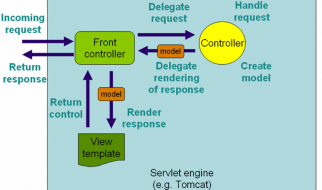
In a previous article, I briefly explored some changes in tone following the election of Donald Trump and the subsequent departure of Barack Obama from the White House. An interesting question that I?ve gotten in the aftermath of the election involves how related militia membership is with demographic elements of the area in question. One assumption that some make is that areas with high Trump-voting populations must therefore also have a tendency towards militia membership.
Given that Pennsylvania is a state that went for Donald Trump in the election by a narrow margin and contained a significant amount of 2012 Obama voters moving towards Trump in 2016, the state would conceivably make a good case for testing the relationship between pro-Trump or anti-Clinton sentiment and the presence of armed militia movements. In order to explore this relationship at a very specific level, I will be using the Pennsylvania Light Foot Militia (PLFM).
 Militiamember-created meme using FTX image as base
Militiamember-created meme using FTX image as base
Pennsylvania Light Foot Militia
PLFM is a state militia operating in Pennsylvania. The group, like many other militias, is made of right-wing Constitutionalists.
The group takes a particular interest in ISIS, the extremist organization primarily in Syria and Iraq. Not unlike many other similar militias, memes and images with macro?ed text over them are popular among social media users. Many of the more popular images are those threatening ISIS or announcing plans to defend territory from the group.
 Image of a militiamember?s kit from FTX in 2013
Image of a militiamember?s kit from FTX in 2013
The group is not formally a III% militia, but many of its members do exhibit at least an open support for III% movements (information on a Georgia chapter of III% here). At field training exercises, members of small battalions hold III% flags for photographs, members wear III% patches prominently on their gear, and social media users post images with III% logos on their pages.
PLFM has been very active in conducting field trainings and usually have a good showing of participants at their field events. PLFM members are trained in marksmanship, leadership skills, and survival medical care. In addition to their own personal rifles, PLFM members train in pistol use and have even trained in helicopter deployment.
 PLFM members in a helicopter
PLFM members in a helicopter
PLFM differs from some of the other militias that I have written about in that the group falls much more in line with the government and law-and-order than some of these other examples.
 Facebook post statement on Oregon occupation. Portions removed, names redacted.
Facebook post statement on Oregon occupation. Portions removed, names redacted.
The militia occupation in Oregon was a key moment for many American militias and the PLFM took an interesting stance. In response to threats of violence against Federal agents, the de facto head of the PLFM made a statement on Facebook denouncing actors who condoned this type of action. In a notable turn from more usual militia responses to the Malheur Occupation, the PLFM endorsed the decision of the Bundy family to go through the court system to handle the disputes. This statement came from the leader of the Laurel Hills gathering of PLFM battalions (Ghost Company), though he also acts as the entire state militia?s voice and organizer.
The PLFM has battalions across the state, using county borders as the divisions between specific units.
 Locations of PLFM battalions throughout Pennsylvania
Locations of PLFM battalions throughout Pennsylvania
The numbering of battalions are elective by the establishing members of each respective county, giving way to numberings like ?007th? (double-o 7th). There are three clusters of militia battalions: southwest (007th, 125th, and 129th), central (65th, 33rd, 23rd, and 27th), and southeast (71st, 11th, 77th). Nearby counties are sometimes included in these regional divisions, but these clusterings are the ones upon which command representatives are referenced.
Variables in militia presence: Trump support?
As I mentioned earlier, I wanted to use PLFM to analyze one aspect that could potentially lead to the creation of a militia and growth of a membership. In this case, I will use polling numbers from the presidential election in 2016. This is a connection that many identify, and reaffirmed by the fact that Trump support is regularly expressed on militia pages of all types.
Using the polling numbers for the presidential election in 2016, ones is able to color counties by most in favor of Clinton (more blue) to most in favor of Trump (more red). Using this coloring, I overlay battalion numbers over their counties:
 Map of electoral outcome, presidential level (2016)
Map of electoral outcome, presidential level (2016)
As this image shows, there?s really no clear indication that Trump-supportive areas correspond to locations with PLFM battalions presence. In fact, some of the key areas for PLFM were Clinton-leaning (27th, 69th, 77th) or in the area surrounding pro-Clinton urban areas (southwestern cluster around Pittsburgh, southeastern cluster outside of Philadelphia).
From this map, it looks like the closest relationship between political views and militia presence is that the members of the county could possibly be coming into fairly frequent contact with members of left-leaning communities rather than living in areas that are in staunch agreement in support of the right.
 Chart of figures
Chart of figures
Just to check this by some basic arithmetic, I took the votes for Trump by county and subtracted Clinton votes to get an ?Overall Vote? (really just the margin by the county, with positive indicating Trump support). I then divided this number by Trump Votes + Clinton Votes to get an integer to indicate the overall direction of support (?Percentage Shift?, positive numbers being in favor of Trump and negative in favor of Clinton, with higher absolute value indicating strength of this vote). I then isolated counties with militias to create a column of Isolated Percentage, of which I then found the mean, ~.26. I then compared this to the overall mean of the state, which came out to ~.30.
This means that in Pennsylvania, the average support for Trump by county was higher than average support for Trump in counties with militias. None of this is controlled for by population but instead was meant to indicate levels of support within county borders. If nothing else, these simple numbers should at least trouble the theory that in all cases, areas with significant support for Trump are areas with a higher probability of having a militia.
The PLFM is only a single case by which to examine this relationship, and only one of a number of militias in Pennsylvania alone. More examination of this relationship would be valuable and interesting.


